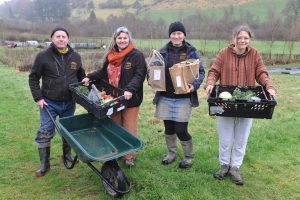THE DAIRY industry has initiated the ‘Action Johne’s’ initiative; a disease control programme developed by the action group on Johne’s which aims at engaging  80% of dairy farmers in Great Britain in Johne’s management activities by October 2016. FUW senior policy officer Dr Hazel Wright said: “The union recognises the importance of tackling this costly disease and has engaged in the development of this initiative in order to give voice to the perspectives and needs of farmers in Wales.
80% of dairy farmers in Great Britain in Johne’s management activities by October 2016. FUW senior policy officer Dr Hazel Wright said: “The union recognises the importance of tackling this costly disease and has engaged in the development of this initiative in order to give voice to the perspectives and needs of farmers in Wales.
The union will continue to remain involved in order to ensure that the maximum benefits of this valuable initiative are provided to Wales.” Johne’s disease is a chronic wasting disease in cattle that is found in dairy herds throughout the world. The disease is caused by a bacterium that primarily attacks the intestinal tract and causes inflammation. This inflammation reduces the ability of infected animals to properly absorb nutrients from their food and can lead to weight loss, loss of condition and infertility. The Dairy UK-led ‘Action Group for Johne’s’, which includes the FUW and other industry stakeholders, was established to increase awareness of the disease and ensure more farmers take action to prevent their livestock from catching it.
Dr Wright added that it is vital that we have a viable and sustainable dairy industry and in that respect it is important that we address issues such as Johne’s disease in dairy herds. “Clinical signs of the disease are not specific to Johne’s and do not show in cattle until they are about three years old. There is no cure for the disease and a lack of clinical signs can lead to cattle being culled for other reasons such as infertility or lameness,” said Dr Wright. Infection is most common in young animals and occurs through contamination of the environment or ingestion of contaminated milk from an infected cow. It can also be transmitted from an infected pregnant animal to its foetus.
“In the past, the union has highlighted that farmers can actively help to eliminate the disease by reducing the amount of faecal contamination that young calves are exposed to. A non-infected herd generally becomes exposed through herd expansion or replacement animals that are carriers of the disease. It is therefore important to know the Johne’s status of the animals being purchased. Given that a Johne’s problem can reduce the lifetime productivity and health of infected herds, it is essential that we understand how to manage this disease in order to get the best out of our herds,” added Dr Wright.













Add Comment